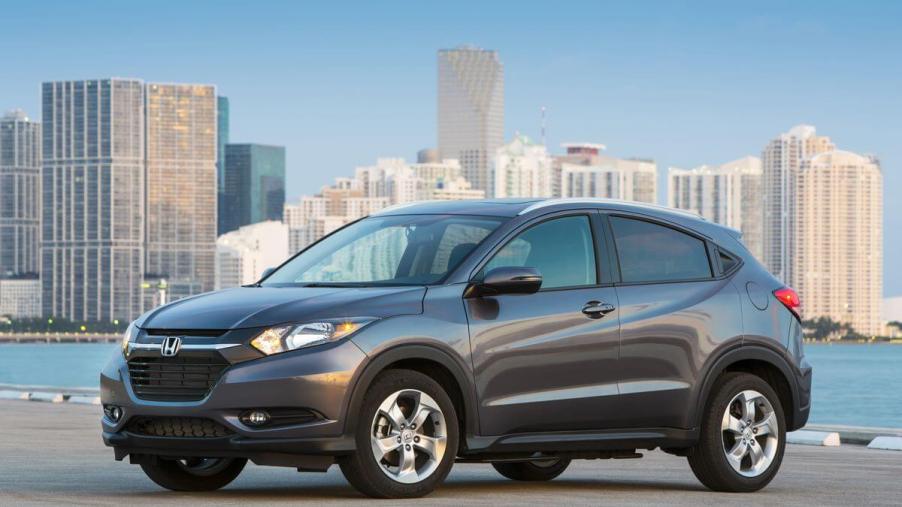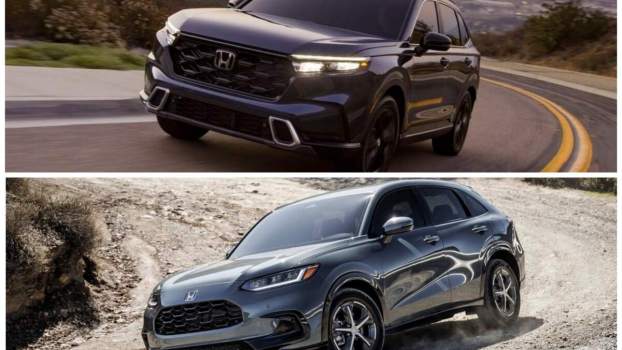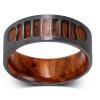
Honda HR-V: A History of the CR-V’s Smaller, Less Popular Sibling
Honda is one of the most popular automakers in America. Like many other American automakers, the Japanese auto giant has been investing in the SUV segment for a while now. One of the more recent additions to the Honda SUV lineup is the HR-V, the popular CR-V’s smaller sibling. Here’s a look at the surprisingly long history of the Honda HR-V and why it may be a less popular option than the CR-V.
The first generation of the Honda HR-V was brief and exclusive
Autoblog profiled the history of the Honda HR-V, and while many Americans may not know it, the model has been around since 1998. Honda is a Japanese automaker, after all, and naturally, many of Honda’s options debut in Japan, and some never get exported to America. That was the case with the first generation of the HR-V, as it was initially only sold in Japan. However, in 1999, it was also sold in Europe.
The first model year of the HR-V was unique as it was a two-door SUV based on a hatchback. In its second year, the automaker made the car larger and gave it four doors. Unsurprisingly, the small SUV was relatively weak, with a 1.6-liter four-cylinder engine that got 104 hp and 102 lb-ft of torque. Honda stopped selling the HR-V by 2006, though, and the nameplate didn’t receive any updates until much later.
The second generation of the Honda HR-V is what most folks know of
In 2013, Honda started production on the second generation of the HR-V, and this became the generation that the automaker sold in many countries, including America. However, Honda didn’t actually launch the HR-V in the U.S. until 2016, and it was a different car than what Japan or Europe got, largely due to its powertrains.
In the American auto market, this generation of the HR-V started with a 1.8-liter four-cylinder that got 141 hp. That wasn’t as appealing as the hybrid powertrains that Japan got or the 180-hp engine option that was offered in Europe. Regardless, Honda gave the HR-V plenty of upgrades, including a refresh for its 2019 model year. That helped keep its sales relatively high, and the HR-V routinely beat out other subcompact SUVs.
The third generation of the Honda HR-V is where it’s at right now
Since the second generation of the HR-V started in 2013, it was due for a redesign. That happened with the 2023 model year, which significantly improved the small SUV overall. For example, its 2.0-liter four-cylinder engine gets 158 hp now, a 17 hp improvement from before. The Japanese auto giant also gave the car a brand-new look, and its touchscreen grew to 9 inches.
Why the Honda CR-V may be more popular than the HR-V
Despite the recent redesign, the Honda HR-V isn’t doing as well as its bigger sibling. In the first four months of 2023, Honda has sold just over 35,000 units of the subcompact crossover. That’s a decent amount of sales, but the problem is when that number is put into context. In those first four months of the year, the Japanese automaker has already sold over 99,000 units of the CR-V compact SUV.
On top of that, compared to last year, HR-V sales are faltering. Honda sold about 56,000 units of the HR-V in the first four months of 2022. That’s a staggering 36% drop in sales. It’s unclear why the CR-V is so much more popular, but it’s possible that the HR-V is too small. The CR-V may also have better name recognition and reputation than the HR-V.




